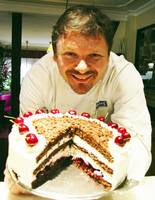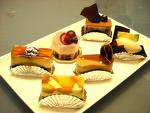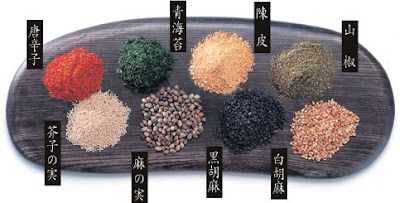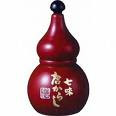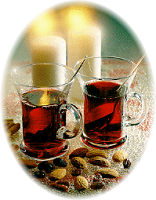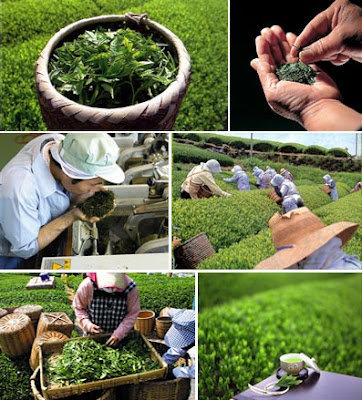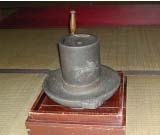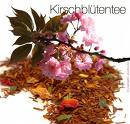[ . BACK to WORLDKIGO TOP . ]
. Saga district, Tokyo .
- see below - Sagacho 佐賀町
::::::::::::::::::::::::::::::::::::::::::::::::::::::::::::::::::::::::::::::::::::::::::::::::::::
Saga Prefecture
 Saga Prefecture (佐賀県, Saga-ken)
Saga Prefecture (佐賀県, Saga-ken)
is located in the northwest part of the island of Kyūshū, Japan. It touches both the Sea of Japan and the Tsushima current 対馬海流 and the Ariakekai Sea 有明海. The western part of the prefecture is a region famous for producing ceramics and porcelain, particularly the towns of
Karatsu 唐津, Imari 伊万里, and Arita 有田.
The capital is the city of Saga.
Kyūshū's smallest prefecture, Saga, is located on the northwest corner of the island, bordered by the Genkai Sea and the Tsushima Strait to the north and the Ariake Sea to the south.
In ancient times the area composed by Nagasaki Prefecture and Saga Prefecture was called
Hizen Province. The current name dates from the Meiji Restoration. Rice farming culture has prospered here since ancient times, and vestiges can be seen at the ruins of Nabatake in Karatsu and the Yoshinogari site in Yoshinogari.
From the Kamakura period to the Muromachi period it is thought that over 100 feudal clans existed. Also exerting great influence during this time was a samurai clan operating along the Genkai Sea called the Matsuratō. Upon entering the Sengoku period, the
Ryūzōji clan expanded their control to include all of Hizen and Chikugo Provinces, and part of Higo and Chikuzen Provinces. After the death of daimyo Takanobu Ryūzōji, Naoshige
Nabeshima 鍋島 took control of the political situation, and by 1607 all of the Ryūzōji clan's domain was under the control of the Nabeshima clan.
Around the middle of the 19th century, Naomasa Nabeshima strove to set right the domain's financial affairs, reduce the number of government officials, and encourage local industry such as Arita porcelain,
green tea, and coal.
Agriculture, forestry, and coastal fisheries form a large portion of the prefectural economy. Regional agricultural specialties include
Saga beef, onions, and strawberries.
The prefecture is the largest producer of
mochigome (sticky rice) and
greenhouse mandarin oranges in Japan.
© More in the WIKIPEDIA !
:::::::::::::::::::::::::::::::::::::::::::::::::::::::::::::::::::::::::::::::::::::::::::::::::::::
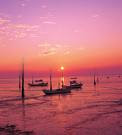 The Ariake Sea (有明海, Ariake-kai)
The Ariake Sea (有明海, Ariake-kai)
is a body of salt water surrounded by Fukuoka, Saga, Nagasaki, and Kumamoto Prefectures, all of which lie on the island of Kyūshū in Japan. It is the largest bay in Kyūshū. Its deepest point is only about 50 m deep, and extreme tides exceed 6 m. It is used for aquaculture, with
nori being a major product. Various species of fauna including
mudskipper (mutsugoro),
Pen shell (Atrina pectinata), and
fiddler crab live in the Ariake Sea. In autumn, there will be red-grass along the sea shore. Recent years have brought increasing pollution, with resultant red tide.
Isahaya Bay is a branch of the Ariake Sea.
Across the Amakusa Islands lies the Yatsushiro Sea.

Many harbors are located on the coast. Among them are Misumi (in the city of Uki, Kumamoto Prefecture), Shimabara (Shimabara, Nagasaki), Taira (Unzen, Nagasaki), Nagasu (Kumamoto), Kumamoto (Kumamoto) , Miike (Omuta, Fukuoka), Kuchinotsu (Minamishimabara, Nagasaki), and Oniike (Amakusa, Kumamoto).
© More in the WIKIPEDIA !
Ariake ryoori 有明料理
Cuisine of products from the Ariake-kai sea
The Ariake sea and flatlands are rich in nutritients and rivers carry more nutritients from the mountains to the sea. The mix of fresh water and sea water is good for many kinds of seafood. The tide changes the sea level about 6 meters.
This food is served often in the town of Saga.
. . . CLICK here for Photos !
. nama kurage 生クラゲ raw jelly fish
eaten with grated ginger and soy sauce
akakurage, aka kurage 赤水母(あかくらげ)red jellyfish
Chrysaora melanaster
:::::::::::::::::::::::::::::::::::::::::::::::::::::::::::::::::::::::::::::::::::::::::::::::::::
Regional Dishes from Saga 佐賀の郷土料理
. . . CLICK here for Photos !
agoyaki あご焼(トビウオ) / yaki ago 焼あご fried flying fish
aisu puranto アイスプラント "ice plant" , sea fig, chrystal leaf
Mesembryanthemum crystallinum
Carpobrotus chilensis
. . . CLICK here for Photos !
It was originally planted to keep the sand on the beaches of Saga prefecture and other parts of Japan. It has white spots like salt on its leaves.
It is now promoted for eating, called
barafu バラフ Barafu.
salty vegetable 塩味野菜
Saga University's Department of Agriculture, Prof. Ogawa Takahiro is promoting it as edible since 2006. Fa. Nokendo (Nookendoo 農研堂(のうけんどう).
Made into Barafu ice cream and other sweets like roll cake or short cake.
http://www.barafu.jp/sweets.html . . . with photos
Or fried with other ingredients or used in salads.
burakku monburan ブラックモンブラン "black Montblanc"
ice cream with chocolate cover
when you finish eating, you might win something, written on the stick. Invented by 竹下小太郎, when he saw the Monblanc in Swizzerland and thought it might be more delicious with a chocolate cover.
 dabu だぶ food for communal festivities
dabu だぶ food for communal festivities
kyoodoshoku 郷土食. Also prepared when entertaining important visitors.
Regionally called 「ざぶ zabu 」「さぶ sabu」「らぶ rabu」
With boiled root vegetables, shiitake mushrooms, konnyaku (mostly frozen konnyaku), fu wheat gluten crutons etc. and always the lotos roots from Ariakekai. Kombu and chicken for the broth and kamaboko for more filling. Thickened with a bit of
katakuri starch. Juice from squeezed fresh ginger adds some flavor and keeps the body warm in winter.
When eating the broth, it makes the sound SABU SABU when old people eat it, hence the naming.
Prepared for all the villagers.
On happy occasions, the food is cut into small squares and flavored without sugar. An even number of ingredients is used. Salt and soy sacue are usef for flavoring.
On sad occasions like funerals and memorial services (うれいの時), it is cut in triangular form and sugar is used to enliven the palate. Instead of chicken atsuage tofu is used.
It is served in a large bowl and each person can take as much as he likes into his own personal "dabu bowl" だぶ椀.
Famous isKaratsu, Hamasaki village. 唐津市浜崎地区
When prepared only for the family, it is
inaka dabu 田舎だぶ, when prepared for guests, it is
okyakusama dabu お客様だぶ.
This is also prepared in villages of Fukuoka in Northern Kyushu.
dagojiru だご汁 miso soup with dumplings
Famous at the hot spring Takeo onsen 武雄温泉, in the sprit of samurai simplicity and fortitude (shitsujitsu gooken しつじつごうけん【質実剛健】)
Dumplings from wheat flour are made from hand, called
tsunkiridango つんきりだご, others elongated like udon are
nobedango のべだご.
ganzuke がん漬け / 蟹漬
kani crab pickles
made from local fiddler crab シオマネキ shiomaneki
a kind of
shiokara salt pickles
From Ariakekai
. . . CLICK here for Photos !
gyorokke 魚ロッケ/ ぎょろっけ fried mashed fish and vegetables
from 唐津市
mashed fish (surimi) eggs, carrots are mixed, covered with breadcrumbs and fried. It is formed like a fish in shape, but basically a croquette コロッケ.
Since the early Showa years at the Fujikawa Kamaboko 藤川蒲鉾本店 shop. It had also been called
haikara ten ハイカラ天 highclass tempura,
karee ten カレー天 curry tempura or
panko ten 「パン粉天 bread crumbs tempura. Now there are two flavors, with curry or just salt.
Hizen chagayu 肥前茶粥 rice porridge from Hizen
Prepared in an earthen pot. Green tea is put in a bag and boiled with the rice.
Kanzaki soomen 神埼そうめん(神崎素麺)
somen noodles from Kanzaki
They are prepared with the fresh water from rivers from the mountain area of Sefuri 脊振. They are quite chewy, but smooth. You can enjoy them cold in summer and hot in winter.
. . . CLICK here for Photos !
kuri okowa 栗おこわ mochigome rice with sweet chestnuts
A necessary meal for chrysanthemum festivities on the ninth of september, the double 9 day, in the local dialect called
Okunchi おくんち【御九日】 . In Arita, this is celebrated on the 9th of October
marubooro 佐賀まるぼうろ sweet round cookies
The most important sweet of the area, introduced by the "Western barbarians" from Holland to Nagasaki, more than 300 years ago. Now these cakes are made with honey and eggs and baking powser to make them softer.
. . . CLICK here for Photos !
Matsuura zuke, Matsuurazuke 松浦漬け
whale pickles from Matsuura
The cartilage of the lower jaw of a whale (kaburabone かぶら骨) is watered for a long time, until all the fat is gone and then pickled in sweetened rice bran. This delicacy is counted as one of the five best in Japan 日本珍味五種.

It is sold in cans or containers from Arita porcellain that look like water goblins (kappa 河童)
. . . CLICK here for Photos !
mutsugoroo むつごろう / むつ五郎 haze-type mudskipper of the wetlands
This animal is prepared as food in various ways.
mutsugoro no kabayaki むつごろう蒲焼 grilled on charcoal
Eaten from May to September.
Also as sashimi or simmered in sweetened soy sauce.
niimoji にいもじ sweet potatoes in vinegar dressing
mizuimo, mizu imo みずいも【水芋】, a kind of satsumaimo.
Best in summer to induce an appetite. Sometimes called
"zuiki", when it is dried.
(See also KUMAMOTO for
zuiki.)
nori 佐賀のり / 佐賀海苔 Saga
Nori Laver. seaweed
from the Ariakekai Sea, which is rich in nutritients and rivers carry more nutritients from the mountains to the sea. The mix of fresh water and sea water is good for growing these nori. Since the tide changes the sea level about 6 meters, they also absorb a lot of sunight to give them extra sweetness.
. . . CLICK here for Photos !
.....
yakinori aisu 焼きのりアイス icecream with roasted nori flavor
. . . CLICK here for Photos !
 Ogi koi
Ogi koi 小城 鯉 carp from Ogi town
Near the Falls of Kiyomizu are many restaurants to serve them as sashimi or in miso soup, since the meat does not have a raw taste to it.
The fish grow in the clear rivers of the Tenzan mountains nearby.
. . . CLICK here for Photos of the waterfall and fish dishes!
Ogi yookan 小城羊羹 (おぎようかん)bean jelly from Ogi
also called sakura yookan. Some green powdered tea is added to the mix of sweet bean paste and kanten jelly.
Even the warlord and later regend of Japan, Toyotomi Hideyoshi is said to have liked this.
. . . CLICK here for Photos !
Sagagyuu 佐賀牛 beef from Saga
One of the best in Japan. Cattle grazes in the mild climate of the area, with plenty of fresh water and clean air. It has a sweet taste.
. . . CLICK here for Photos !
sazae さざえ【栄螺】 turban shells
Best grilled, near Cape Hado. They taste slightly salty and of the soy sauce grilled with them. 波戸岬サザエ
from Chinzei town, Karatsu
. . . CLICK here for Photos !
shishirian raisu シシリアンライス Sicilian rice
served on a plate, decorated with mayonnaise, eaten with chopsticks
. . . CLICK here for Photos !
shooro manjuu 松露饅頭 (しょうろうまんじゅう) round Manju cakes
"like shoro mushrooms (truffles) that grow on the trees of Niji na Matsubara 虹の松原 in spring and autumn". The cakes are filled with sweet bean paste, outside is castella cake. They are about 3 to 4 cm in diameter.
Speciality of Karatsu 唐津市.
shooroo ショウロ Rhizopogon rubescens
. . . CLICK here for Photos !
Suko sushi 須古寿司 from Suko town
Suko Town, Kishima island 杵島(きしま)郡白石(しろいし)
The area is famous for its rice planting, since more than 500 years Sushi is made. Especially mutsugoro and other seafood from Ariakekai are used. Also shiitake mushrooms, eggs, goboo, Narazuke pickles, red pickled ginger and mountain vegetables are used to bring sea and mountain on one box sushi (oshi sushi). It is thus very colorful and often also made for festivities. The villagers make it in memory of a former daimyo, who helped them inprove the rice plants of the area.
. . . CLICK here for Photos !
Takesaki kani, Takezakigani 竹崎蟹 crab from Takesaki town
aogani アオガニ "blue crab" Callinectes sapidus
They are as large as 30 cm. Females are better in winter, the males in summer.
They are boiled in seawater 茹で竹崎蟹 to enjoy their natural taste.
koorazake, koora sake 甲羅酒 hot ricewine in the crab shell
. . . CLICK here for Photos !
:::::::::::::::::::::::::::::::::::::::::::::::::::::::::::::::::::::::::::::::::::::::::::::::::::::
toofu 豆腐 bean curd
Saga is famous for its various bean curds.
. . . . . godoofu ごどうふ tofu made with kuzu vines
It is like a pudding with a shining surface and taste of rice.
from Arita 有田名物, often served in a beautiful pot of Arita pottery.
. . . CLICK here for Photos !
. . . . . ishiwaridoofu - ishiwari toofu 石割豆腐 ishiwaridofu, ishiwari-dofu "tofu that can split a stone"
"stone breaking tofu"
from Kashiwajima island 神集島, near Karatsu
It is very hard and quite salty. The amount of eight normal portions of tofu are used for one serving.
Toyotomi Hideyoshi brought this preparation back from his war excursion to the Korean peninsula in the 16th century and is alive to our day.
. . . CLICK here for Photos !
 . . . . . zarudoofu
. . . . . zarudoofu ザル豆腐 / ざる豆腐 tofu in a bamboo basket
This tofu is made without soaking the beans in water, so it has the natural flavor of the soy beans.
from Karatsu 唐津
see also below,
Ureshino Onsen Tofu
. Saga Tofu from Kyoto 嵯峨豆腐
:::::::::::::::::::::::::::::::::::::::::::::::::::::::::::::::::::::::::::::::::::::::::::::::::::::
Ureshino cha うれしのお茶 / 嬉野茶 tea from Ureshino
Green tea and black tea are produced, since it was introduced by the Ming-Chinese in 1504. The original tea is roasted in a metal container or kettle.
Some say this was the origin of tea production in Japan.
Also used to flavor soft ice and other regional sweets.
. . . CLICK here for Photos !
Ureshino Onsen Tofu 嬉野温泉豆腐 tofu with hot spring water
Onsen water is used to make this delightful local dish. The alkaline in the water makes the bean curd in the tofu soft and mellow when it is heated in ceramic pots. Onsen tofu is traditionally served with condiments such as green onion, ginger, and sesame paste to taste.
© More in the WIKIPEDIA !
warasubo 藁素坊 (ワラスボ) green eel goby
Taenioides rubicundus
ワラスボ(藁苞)
Odontamblyopus lacepedii
from Ariakekai. sometimes also called subo スボ、jinkichi ジンキチ or even mutsugoroo ムツゴロウ.
His strange outlook with sharp teeth made him a model for ALIEN.
His flesh is rather tasty. Raw as sashimi, or boiled or grilled with miso. Also dried. A good friend for the sake drinker.
. . . CLICK here for Photos !
Yobuko ika よぶこイカ / 呼子(よぶこ)squid from Yobuko town
near Karatsu town. The squid is almost transparent when served fresh as sashimi. Other parts are eaten as tempura.
The port of Yobuko is famous for its rich fish grounds nearby and fresh fish.
. . . CLICK here for Photos !
::::::::::::::::::::::::::::::::::::::::::::::::::::::::::::::::::::::::::::::::::::::::::::::::::::
Yoshinogari 吉野ケ里
In Memory of Queen Himiko
Yagura manjuu やぐらまんじゅう Yagura manju
Himiko manjuu 卑弥呼まんじゅうや / 卑弥呼饅頭 Himiko manju
Himiko senbei 卑弥呼せんべい / 卑弥呼煎餅 Himiko sembei
akamai aisu 赤米アイス red rice icecream
Yoshino gaarikku 吉野ガーリック giant garlic from Yoshino
Yoshinogari kodaimen 吉野ヶ里古代麺 noodles the old style
Yoshinogari saburee 吉野ヶ里 サブレー Sablee from Yoshinogari
. WASHOKU : 吉野ケ里名物
Specialities near Yoshinogari, Saga
::::::::::::::::::::::::::::::::::::::::::::::::::::::::::::::::::::::::::::::::::::::::::::::::::::
yudedago, yude dago ゆでだご simple wheat cakes
dough from wheat is formed into small round plates by hand and cooked in water. Then brown sugar is coated around it. Sometimes yomogi mugword or red beans are mixed into the dough.
Eaten as a snack by the farmers.
*****************************
Worldwide use
*****************************
Things found on the way
Delicacies from Saga
- source : www.asobo-saga.jp/lang/english
*****************************
HAIKU and SENRYU
aki no tabi Ariakekai no umi no sachi
travelling in autumn -
the good seafood from
Ariakekai sea
Nakayama Hanako, October 2004
:::::::::::::::::::::::::::::::::::::::::::::::::::::::::::::::::::::::::::::::::::::::::::::::::::::
 むつ五郎むつ十郎の泥試合
むつ五郎むつ十郎の泥試合
mutsugoroo mutsujuuroo no doro shiai
mudskipper five
and mudskipper ten
fight in the mud
Mutsugoro
und Mutsujuro
machen eine Schlammschlacht
Awano Seiho 阿波野青畝 (1899 - 1992
This is a play of words with the name of Mutsugoro. Five and ten, a small one and a big one are fighting for a female.
:::::::::::::::::::::::::::::::::::::::::::::::::::::::::::::::::::::::::::::::::::::::::::::::::::::
仏滅の晴天を呼ぶむつ五郎
butsumetsu no seiten o yobu mutsugoroo
bringing fine weather
for Buddha's death day -
Mutsugoro
Nagajima Tenseki 永島転石
(butsumetsu is also an unlucky day in the traditional yearly almanacs.)
*****************************
Related words
Mutsugoro むつ五郎 a type of haze, mudskipper, kigo for late spring
*****
WASHOKU : Regional Japanese Dishes
:::::::::::::::::::::::::::::::::::::::::::::::::::::::::::::::::::::::::::::::::::::::::::::::::::::::::::::::::::::::::::
. Tokyo Kōtō 江東区 Koto ward, "East River" .
Sagacho 佐賀町 . 佐賀一丁目,佐賀二丁目 Saga district, first and second district

In 1692, it was named after the village headmen, 藤左衛門町
Tozaemoncho and 次兵衛町
Jiheicho.
In 1695, it was named after the Saga prefecture, because the harbour of 肥前国佐賀湊 Saga looked similar to the area in Edo.
Near the 深川地域 Fukagawa area, former 深川佐賀町
Fukagawa Sagacho.
In 1878, it became part of 深川区 Fukagawa ward.
In 1947, Fukagawa became part of Koto ward.
:::::::::::::::::::::::::::::::::::::::::::::::::::::::::::::::::::::::::::::::::::::::::::::::::::::::::::::::::::::::::::
[ . BACK to DARUMA MUSEUM TOP . ]
[ . BACK to WORLDKIGO . TOP . ]
- #sagaprefecture #saga -
:::::::::::::::::::::::::::::::::::::::::::::::::::::::::::::::::::::::::::::::::::::::::::::::::::::::::::::::::::::::::::
